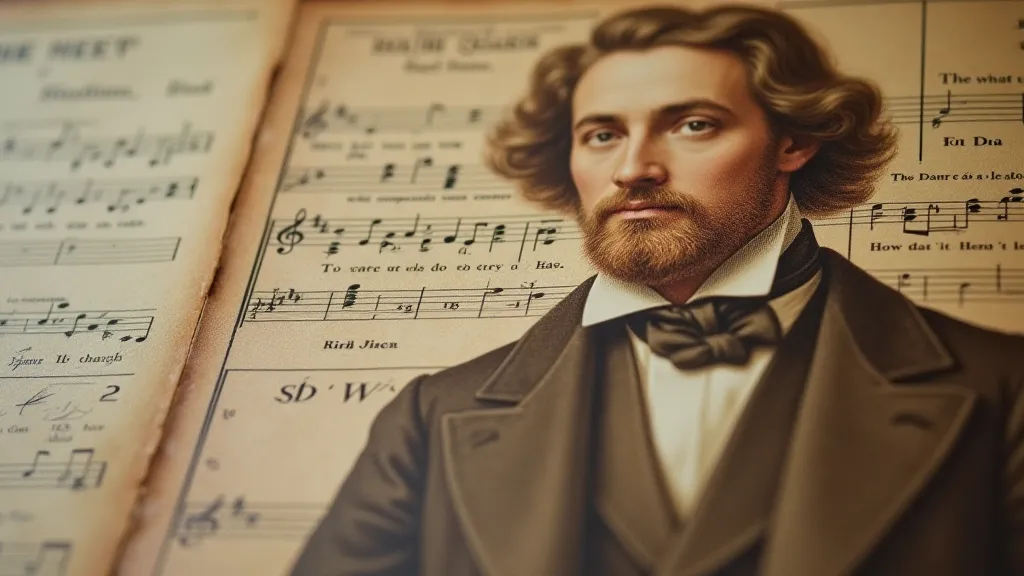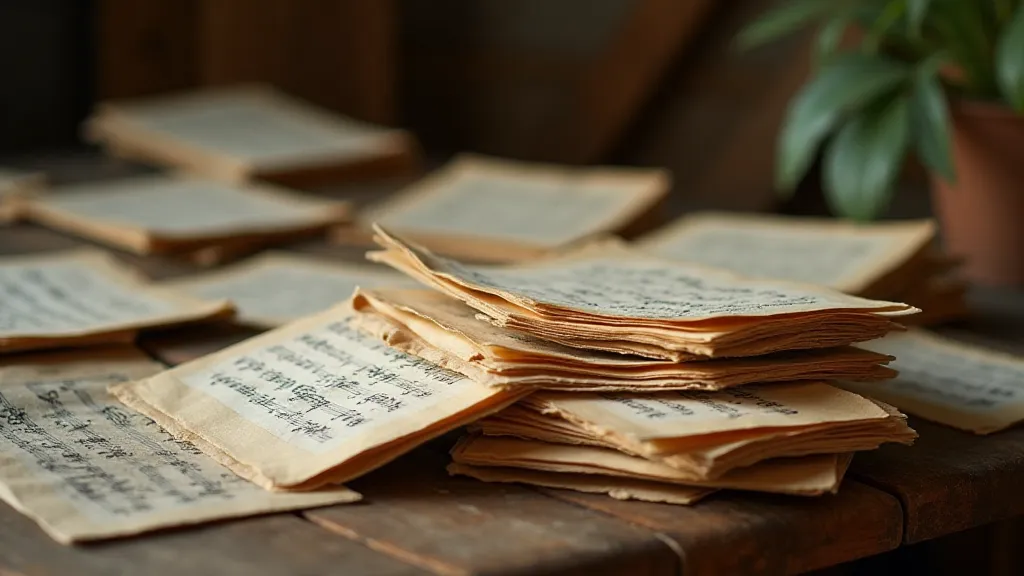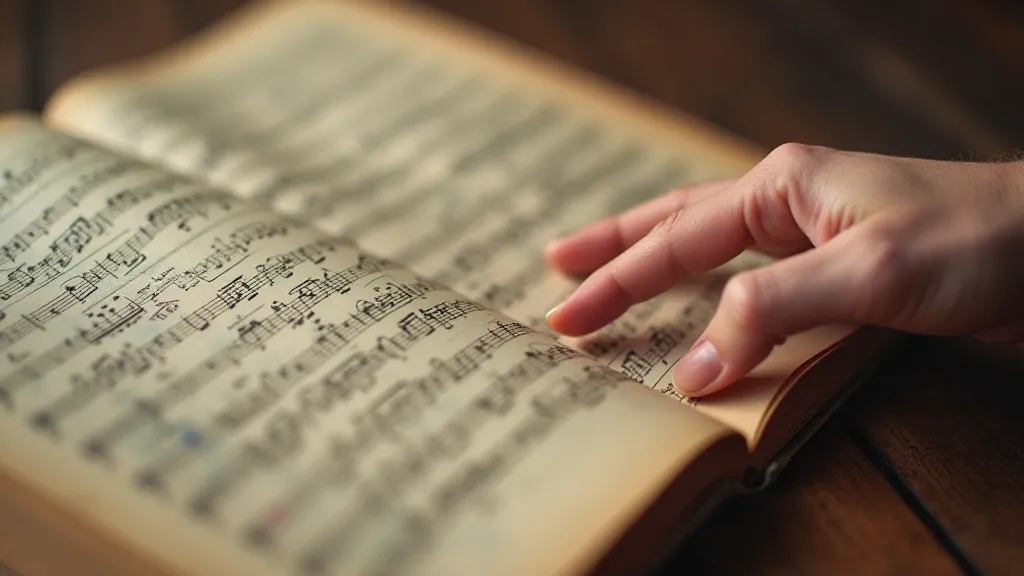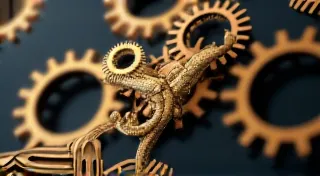The Ghosts in the Staff Lines: Unearthing Forgotten Composers
There’s a quiet melancholy that clings to vintage sheet music, a whisper of forgotten melodies and the echoes of audiences long gone. More than just paper and ink, these fragile documents offer a portal to a bygone era, a time when music filled homes and parlors in a different way. While the names of Beethoven, Mozart, and Chopin resonate through the ages, countless other composers poured their hearts and talents into crafting beautiful music – music that, for reasons often as complex as the compositions themselves, slipped from the public’s memory. Collecting vintage sheet music isn’t just about acquiring beautiful ephemera; it’s about becoming a custodian of lost legacies, a detective piecing together the stories of those whose voices were silenced by time.
My own fascination began with an accordion. An old, battered Hohner, passed down from my grandfather. He rarely spoke of it, but I remember the faint scent of rosin and the ghostly impression of his fingers on the keys. He played mostly popular tunes of the 1930s and 1940s, songs I now recognize through the sheet music that accompanied it – sheet music featuring composers whose names I’m only now discovering.

The Composer’s Landscape: A Fleeting Fame
The late 19th and early 20th centuries were a golden age for music publishing. The rise of the middle class created a massive demand for home music-making. Families would gather around the piano or gather round with instruments like the accordion, playing through newly purchased sheet music. This meant a proliferation of composers striving for recognition. Many were immensely popular in their day, their music gracing concert halls and salons, only to be eclipsed by shifting tastes or the rise of newer, more “innovative” styles. It's fascinating to consider how the very technology used to disseminate this music – the printing presses and their processes – impacted its accessibility and, ultimately, its lifespan. You can delve deeper into this fascinating aspect of musical history by exploring The Ledger's Lament: How Printing Technology Shaped Musical Accessibility.
Consider Clarence E. Hamilton. A prolific American composer and pianist, Hamilton penned hundreds of waltzes, marches, and popular songs between the 1890s and the 1920s. His pieces were wildly successful, featured in vaudeville shows and played by amateur musicians across the country. His music reflected the optimism and burgeoning entertainment culture of the era. Today, the name Clarence E. Hamilton is virtually unknown outside of specialist circles, yet his sheet music, often adorned with charming illustrations, represents a vibrant slice of American musical life.
Or take Ethelbert Nevin, a composer of Irish-American heritage whose melodies possess a poignant, romantic quality. His "A Sprig of Heather" remains his most recognizable piece, but his catalog contains a wealth of other gems, showcasing a remarkable talent for lyrical writing. Why did his fame diminish? Perhaps his style, rooted in Romantic sentimentality, felt antiquated as modernism swept through the musical landscape. The rise and fall of popularity is a recurring theme in music, as tastes evolve and new trends emerge. Often, a deeper understanding of the nuances in performance practices can shed light on these shifts, revealing how subtly interpretation evolved alongside changing aesthetic preferences; exploring The Silent Symphony of Ornamentation: Deciphering Performance Nuances in Vintage Scores can offer insights into these changes. You might find it interesting to consider the Ephemeral Rhythms: Sheet Music and the Fleeting Nature of Popularity impacting the fortunes of composers like Nevin.
The Artistry of the Sheet Music Itself
Beyond the music, the sheet music itself is a fascinating artifact. The covers, often lavishly illustrated, were designed to entice potential buyers. These weren't just functional documents; they were advertisements, works of art in their own right. The lithographic printing techniques of the era allowed for incredible detail and vibrant colors, now softened and faded by time, lending an undeniable patina of age. Many covers depicted idealized scenes of domestic life, showcasing the joy of music-making within the family. The paper stock itself varied, from thin, fragile newsprint to heavier, more durable stock, providing clues about the piece's intended audience and lifespan. The delicate nature of these older papers means their preservation requires careful consideration; factors like humidity and sunlight can significantly impact their longevity.
The craftsmanship involved wasn’t limited to the printing process. The engravers meticulously carved the musical notation, demanding a level of precision and skill rarely appreciated today. Look closely at the staff lines, the individual notes – each mark represents hours of painstaking labor. There’s a beauty in this detail that transcends the music itself, offering a tangible connection to the hands that created it. Understanding the environmental factors impacting these paper artifacts and appropriate preservation strategies is crucial for ensuring their survival. For a deeper look into this, check out The Paper’s Fragility: Environmental Factors and Preservation Strategies.
More Than Just Notes: Stories Woven in the Paper
Collecting vintage sheet music isn’t simply about acquiring a piece of paper; it’s about uncovering stories. Sometimes, you can find handwritten annotations on the margins – a pianist’s practice notes, a family member’s dedication, a child’s tentative attempts at learning a melody. These markings offer a glimpse into the personal lives of those who once cherished these pieces, transforming them from mere objects into living documents of musical history.

I recently acquired a collection of sheet music from an estate sale. Among them was a well-worn copy of a song by a composer named Walter Ridout. Inside the cover was a faded photograph of a young woman with a confident smile and an inscription: "To Mother, with love, 1918." It’s a simple gesture, a small piece of family history, but it brought the music to life in a way that no amount of research could. It wasn’t just about the notes on the page; it was about the love and memory that had been intertwined with them. It's these intimate connections to the past that truly make collecting vintage sheet music so rewarding.
Restoration and Preservation: Honoring the Past
Naturally, vintage sheet music is fragile. Handling it with care is paramount. Proper storage, away from direct sunlight and humidity, is essential to prevent further deterioration. Professional restoration is an option for particularly valuable or damaged pieces, but it’s a delicate process that should be undertaken by someone with expertise in paper conservation. The challenges of maintaining a consistent temperature and humidity in storage environments can be significant, impacting the long-term preservation of these delicate documents.
For many collectors, the appeal lies not just in preservation, but in the process of gently cleaning and stabilizing the paper. This isn’t about restoring it to a pristine condition, but about arresting the process of decay and ensuring that it can be enjoyed for generations to come. Simple techniques like deacidification can significantly extend the lifespan of acidic paper stock. The subtle shifts in tempo and style throughout musical eras also influence how we interpret and appreciate older sheet music; it's a fascinating lens through which to view the evolution of music. You can explore this further by examining The Metronome’s Quiet Witness: Tracking Tempo Shifts in Musical Eras.
A Legacy Resurrected
The act of collecting vintage sheet music is, in essence, an act of resurrection. By preserving these forgotten melodies and sharing their stories, we can breathe new life into the legacies of composers who might otherwise be lost to the sands of time. Perhaps, someday, a young pianist will stumble upon a forgotten piece by Clarence E. Hamilton or Ethelbert Nevin and be captivated by its beauty, ensuring that their music continues to resonate for years to come. The ghosts in the staff lines aren’t truly lost; they’re waiting to be rediscovered, their voices yearning to be heard once more. The journey of a single sheet of music – from the composer's hand to the performer's fingers and finally, to a collector's care – is a testament to the enduring power of music and the human desire to connect with the past.






